Publications
Acoustic Vibration Modes of Gold–Silver Core–Shell Nanoparticles
The EFSL research group, in collaboration with the Laboratoire Lumière, Matière et Interfaces and the Laboratoire de Physique des Solides of Université Paris-Saclay (France) and with the Institut des Molécules et Matériaux du Mans of Le Mans Université, has published a paper in the Special Issue "Photonics and Plasmonics: New Challenges for Optical Nanostructured Materials" of the Chemosensors journal. The title of the article is "Acoustic Vibration Modes of Gold–Silver Core–Shell Nanoparticles".
#ultrafast #plasmonics #Nanoparticles
A new material increases the production of "green" hydrogen from biomass
A newly synthesized nanomaterial is able to increase the production of green hydrogen from biomass through the photoreforming process, which exploits sunlight to "extract" hydrogen from green waste with the help of a catalyst, in this case a new photo-catalyst based on titanium dioxide. This is the result of a recent collaboration between the University of Trieste, ICCOM-CNR, Czech Advanced Technology and Research Institute of Olomouc and ISM-CNR (Elettra Sincrotrone Trieste).
A study published in Chem Catalysis.
#greenhydrogen #photoreforming #titaniumdioxide
First demonstration of a 3-terminal thermionic-photovoltaic hybrid device
The paper that demonstrates for the first time the operations of a 3-terminal hybrid thermionic-photovoltaic device at very high temperatures for the conversion of thermal energy into electrical energy has been published in the journal Advanced Energy Materials. The converter is characterized by a common terminal and a thermophotovoltaic cell which also functions as a thermionic anode.
#openaccess #energy #sustainability #solarconversion
Fabrication of a New, Low-Cost, and Environment-Friendly Laccase-Based Biosensor by Electrospray Immobilization with Unprecedented Reuse and Storage Performances
The CNR-ISM together with other Institutes such as ISMN, IGAG and IMAA and with the participation of Sapienza University of Rome and the University of Foggia, has developed a new eco-sustainable technology to produce enzymatic biosensors, which show unprecedented performance in terms of storage and working stability.
Article published on American Chemical Society (ACS), Sustainable Chemistry and Engineering
#biosensor #laccase #electrospray #deposition #immobilization #ecofriendly #green #storage #reuse
Selective Effects of the Host Matrix in Hydrogenated InGaAsN Alloys: Toward an Integrated Matrix/Defect Engineering Paradigm
Article published on Advanced Functional Material.
In dilute nitride InyGa1−yAs1−xNx alloys, a spatially controlled tuning of the energy gap can be realized by combining the introduction of N atoms—inducing a significant reduction of this parameter—with that of hydrogen atoms, which neutralize the effect of N. In these alloys, hydrogen forms N–H complexes in both Ga-rich and In-rich N environments.
Here, photoluminescence measurements and thermal annealing treatments show that, surprisingly, N neutralization by H is significantly inhibited when the number of In-N bonds increases. Density functional theory calculations account for this result and reveal an original, physical phenomenon.
#dilute_nitride_alloys #density_functional_theory
Towards high-efficiency oxygen evolution reaction
The sluggish kinetics of the oxygen evolution reaction is the bottleneck for the practical exploitation of water splitting. Our recent paper in Advanced Energy Materials demonstrates the potential of a core-shell structure of hydrous NiMoO4 micro-rods conformally covered by Co3O4, whose performances exceed the activity of the most efficient catalysts recently published. Multiple experimental techniques consistently reveal the occurrence of an irreversible reconstruction of the catalyst during its activity that determines its highly efficient performances.
#core_shell_structure #oxygen_evolution_reaction #synchrotron
A “smart” molecular mechanism at the origin of life?
An experimental and theoretical study, cover article of the J. Phys. Chem. Lett. which has involved researchers from the Institute of Structure of Matter, proposes a model in which simple combinations of amino acids not only survive the interaction with VUV radiation, but exploit it to generate more complex peptide chains.
These mechanisms, which theoretical simulations have shown to be energetically favoured, may have played a role in the early stages of the chemical evolution of life.
#dipeptides #synchrotron #radiation #moleculardynamics
Demonstration of the Existence of Dumbbell Silicene: A Stable Two- Dimensional Allotrope of Silicon
In this paper published in The Journal of Physical Chemistry C it is demonstrated that, by extending the amount of deposited silicon beyond the limit required for the well-known formation of silicon nanoribbons, novel two-dimensional silicon structures are obtained: silicene and dumbbell silicene. The possibility of synthesizing dumbbell silicene, already predicted by theoretical calculations, opens up interesting perspectives for the exploration of the functionalization and predicted topological properties of this new 2D silicon allotrope.
#Silicene #2D_materials #Grazing_incidence #Xray_diffraction #Density_functional_theory #Scanning_Tunneling_Microscopy #Synchrotron_radiation
Effect of a subnanometer thin insulator layer at the Ag/Si(111) interface through the observation of quantum well states
In this paper published on Physical Review Materials, the “two-step” growth technique has been used to grow atomically uniform Ag films on 7×7 Si(111) and 8×8 β-Si3N4(0001)/Si(111) surfaces. Angle-resolved photoemission spectroscopy reveals the formation of sp quantum well states in the Ag films with distinct properties in the two cases. It is shown that the valence electrons in silver can be confined in the fundamental gap of a less than 1-nm-thin nitride layer, effectively decoupling the Ag and Si states.
#electronic_structure #quantum_interference_effects #surface_reconstruction #surface_states
A new paradigm for molecular assembly on semiconductor surfaces
In a new publication in Nature Chemistry, an interdisciplinary collaboration including researchers from CNR-ISM have demonstrated a new paradigm for molecular #functionalizion of #semiconductor surfaces by preparing stable, ordered arrays of #organic_molecules on silicon. Using N-heterocyclic #carbenes with customized electronic and geometrical properties, the team have shown that self-assembled growth of single molecular layers can be achieved, opening up new possibilities in semiconductor technologies. #SAMs
More...
Non-linear optics in graphene and other two-dimensional materials
A work that paves the way for the control and a future engineering of the non-linear transport properties and of the third-harmonic generation response in the low-frequency regime of terahertz.
Deep-subwavelength 2D periodic surface nanostructures on diamond by double-pulse femtosecond laser irradiation
Two-dimensional laser-induced periodic surface structures (LIPSSs) with a deep-subwavelength periodicity (80 nm ≈ λ/10) were obtained for the first time on diamond surfaces. The unique surface nanotexturing is achieved by employing a technique that relies on irradiation with two temporally delayed and cross-polarized fs-laser pulses generated with a Michelson-like interferometer configuration. In this paper, we demonstrate that, if the delay between two consecutive pulses is ≤ 2 ps, the 2D periodicity of nanostructures can be tuned by controlling the number of pulses irradiating the surface.
Flexible magnetoreceptors for on-skin touchless human-machine interfaces
In a new paper published in the prestigious journal Advanced Functional Materials, an international team of researchers demonstrated for the first time the feasibility of flexible magnetoresistive spin valve switches operating with out-of-plane magnetic fields, which can be used for the realization of on-skin interactive magneto-electronic devices, which are touchless, energy efficient (momentary switches) and insensitive to external magnetic disturbances (latching switches).
Light and nanoparticles for a 'green' catalysis
A study conducted by the Cnr, the University of Modena and Reggio Emilia, the University of Bologna and Elettra Sincrotrone Trieste has clarified the ultra-fast mechanisms of energy transfer within photocatalytic materials. The results, published in Nano Letters, will help develop new catalysts for environmental and energy applications

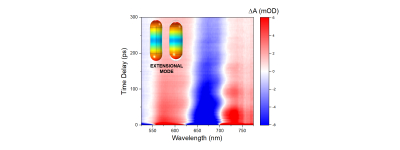

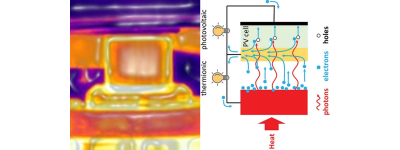
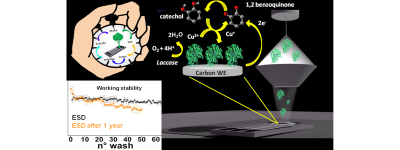
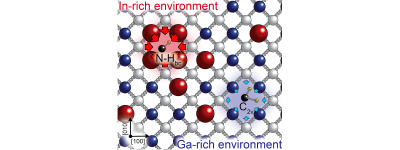
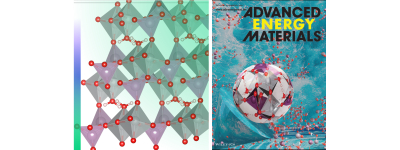
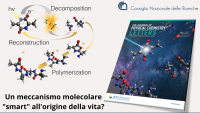







 English (UK)
English (UK)  Italiano (Italia)
Italiano (Italia)